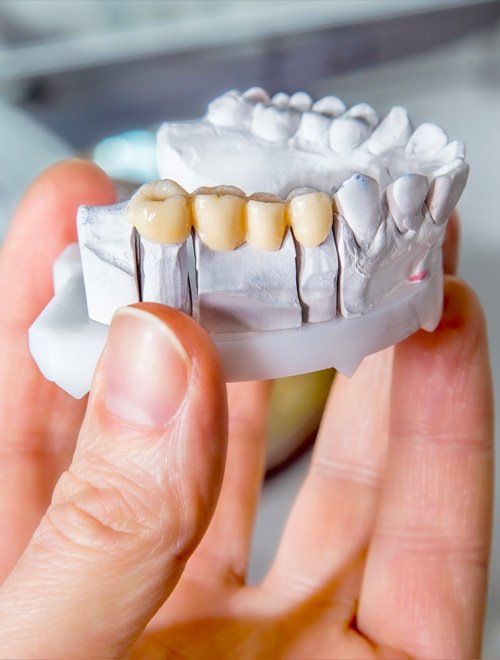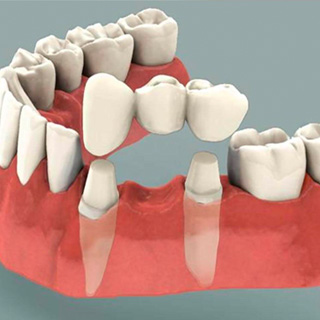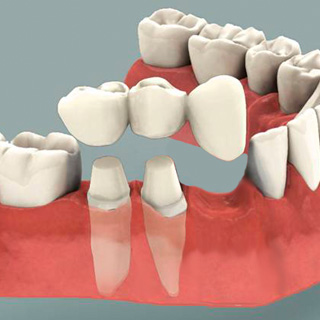
What is a Dental Bridge?
Dental bridges literally bridge the gap created by one or more missing teeth. A bridge is made up of two or more crowns for the teeth on either side of the gap — these two or more anchoring teeth are called abutment teeth — and a false tooth/teeth in between. These false teeth are called pontics and can be made from gold, alloys, porcelain, or a combination of these materials. Natural teeth or implants support dental bridges.
What Are the Benefits of Dental Bridges?
- Restore your smile
- Restore the ability to chew and speak properly
- Maintain the shape of your face
- Distribute the forces in your bite properly by replacing missing teeth
- Prevent remaining teeth from drifting out of position
What Types of Dental Bridges Are Available?
There are three main types of dental bridges:

Traditional bridges involve creating crowns for the teeth on either side of the missing tooth, with a pontic in between. Traditional bridges are the most common type of bridge and are made of either porcelain fused to metal or ceramics.

Cantilever bridges are used when there are adjacent teeth on only one side of the missing tooth or teeth. This is not very common anymore and is not recommended in the back of the mouth where it can put too much force on other teeth and damage them.
How Long Do Dental Bridges Last?
Dental bridges can last five to 15 years and even longer. With good oral hygiene and regular checkups, it is not unusual for the life span of a fixed bridge to be more than 10 years.



